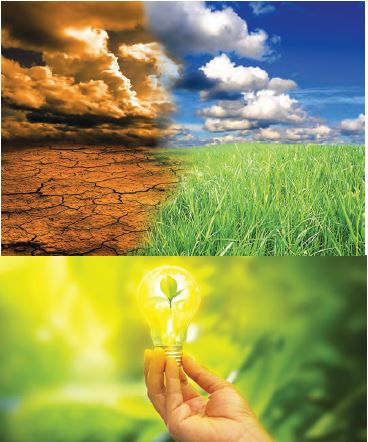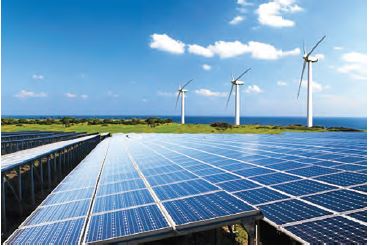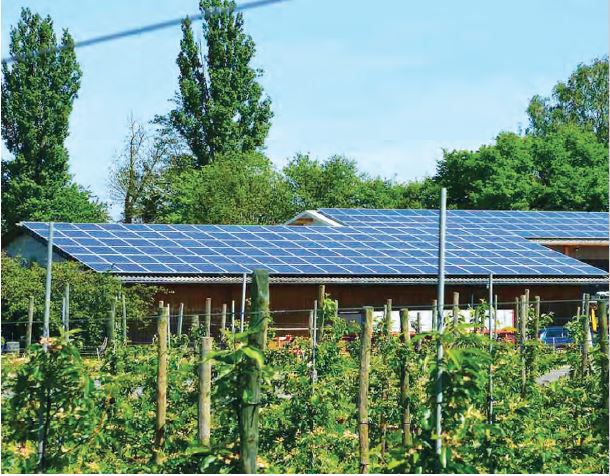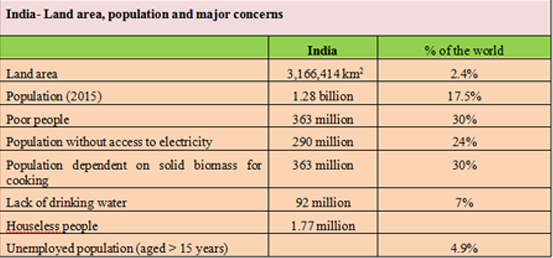 |
|
 |
WEB EXCLUSIVES |
 |
|
| |
| |
 |
| Cover Story
|
 |
 |
| Textiles’ – the word brings up images of beautiful drapes – cotton, silk, chiffon, lace. Whether it is the material draped on the figurine of the lady... |
|
 |
| |
read more... |
 |
|
 |

|
|
Tapping Sustainable Energy Alternatives
|
|
|
The second lead article, which is also focus article, is written by Shri N Bhadran Nair. Citing a report of the World Health Organisation, the author has advocated for tapping sustainable energy alternatives
|

|

|

|

|
|
Financing Renewables in India
|
|
|
The third article is written by Shri P C Maithani, Adviser, Ministry of New and Renewable Energy. He has focussed on renewable energy resources
|

|

|

|
|
Steps to Achieve India’s Solar Potential
|
|
|
The special article is written by Sumant Sinha, Chairman and Managing Director of ReNew Power. He opines that India must also honour its global commitments on curbing greenhouse gas emissions
|

|

|
|
|
 |
|
|
|
|
| |
India pledges for non-fossil fuel-based energy
R.C. Sundriyal, S.K. Nandi & P.P. Dhyani
Well ahead of the twenty-first session of the Conference of the Parties (COP) that is scheduled from 30 November to 11 December 2015 in Paris, France, India has voluntarily placed its Intended Nationally Determined Contribution (INDC) for climate justice that vowed its commitment in energy sector as well. It campaigns to increase non-fossil fuel-based energy resources by up to 40% by the end of 2030, which means India plans to generate 40% more electricity from renewable sources along with increasing energy use efficiency that would significantly reduce its dependence on fossil-fuel that is often blamed for greenhouse gases (GHGs) emission and climate change. It is a huge challenge in itself and calls for extraordinary vision, leadership, and compassion with carefully built policies, programmes and action lines. However, the Government of India is all set to take up this ambitious task.
Emission by countries (2012):

The GHGs accumulation has been debated since the time of industrial revolution and at present has emerged as one of the biggest contributors to the global warming. The United Nations Framework Convention on Climate Change (UNFCCC) has been pleading that this issue needs more response from the developed countries and calls for desired global actions. In comparison to per capita emissions (2010) of developed countries (7 to 15 tons/person), the emissions in India is much lower (1.56 tons/person), which clearly reflects that India is not a part of the problem. However, the country has been playing an active and constructive role to find a proactive solution to this problem.
Challenges for India
India is the seventh-largest country in the world with a total area of 3,166,414 km2 and over 1.28 billion people (2015) that accounts for 2.4% of world land area and 17.5% of the world population. It is home to 30% global poor with 304 million people without access to electricity. Among the most deprived people on the globe, India has 30% global population that is totally dependent on solid biomass as main source of energy for cooking, and nearly 7% without the access to safe drinking water. Rural communities in the country are largely dependent on natural resources for their diverse needs. It is a huge challenge to conserve nature along with fulfilling the basic needs and demands of its population, such as poverty eradication, food and nutritional security, access to education and health, gender equality and women empowerment, water and sanitation, employment, sustainable urbanisation and new human settlements. About 48% rural households lack basic facilities and are categorized as 'deprived'. There is also a continuous need for clean and efficient energy systems along with the energy access and energy security to increase production and growth.

These challenges need to be looked into while addressing sustainable development for the country despite the fact that India has endeavoured to pursue 'cleaner' conduit. As the UNFCCC is engaged in multilateral negotiations on climate change related issue, India has shown its best commitments to do so and is working for an effectual, supportive and equitable framework for climate justice. As such the country has a history to live in harmony with nature and is trying hard to take new and innovative strategies along with new technologies while moving through this developmental process.
Energy scenario in India

India has a total installed power capacity of 245259 MW, mainly from thermal (70%), hydro-power (14%), and remaining from other means. The average per capita energy consumption (PEC) (2011) (i.e. 0.6 tonnes of oil equivalent-toe) is much lower than the global average (1.88 toe). The consumption of energy in the form of Coal and Lignite accounts for 41.29%, crude petroleum 38.70%, and electricity 14.47%.
The per capita electricity consumption stands as low as 917 kW, which is merely one-third of the world's average consumption. The country is observing rapid urbanization, and it is expected that by 2030 nearly 40% population would reside in urban areas as against 30% currently. Therefore, the need of increased population and industries will amplify by many folds. In rural areas although 85% villages are connected to an electricity grid, but only one-third of these villages are electrified, and often the supply is erratic with high fluctuation and shortage. The rural population is largely dependent on biomass for cooking using inefficient stoves, which has induced many health risks as well as environmental implications such as GHG emissions and deforestation. Under such circumstances, using renewable energy sources such as solar, wind and biomass provides significant potential for sustainable development. Thus India faces a formidable and complex challenge in working for economic progress towards a secure future for its citizens as well as meeting environmental and climate change concerns. Despite the fact that the country is moving ahead in a strategic manner safeguarding the need of the country as well as meeting the global challenges, it has also addressed 'development without destruction'. For this purpose, a broad policy framework has been put in place.
Policy framework
In recent years many policies have been positioned in India to meet environmental and climate change concerns. National Environment Policy (NEP), National Action Plan on Climate Change (NAPCC), State Action Plan on Climate Change (SAPCC), and Policy for Farmers are some of these initiatives. These policies focus on achieving sustainable development in tune with ecological integrity, economic advancement, and social justice along with the sectoral growth. For strengthening the energy sector, several policies, action plans and provisions have also been provided as envisaged in National Energy Conservation Act, NEP, and Integrated Energy Policy (IEP). Other efforts include providing coal cess, increase in taxes on petrol and diesel, and cuts in subsidies along with improvising market mechanisms including Perform Achieve and Trade (PAT), Renewable Energy Certificates (REC) and a regulatory regime of Renewable Purchase Obligation (RPO). Efforts are also made to strengthen the institutional arrangement for renewable power generation.

It is noteworthy that on voluntary basis India has already gone ahead in achieving the goal of reducing the emissions intensity of its GDP by 20–25%, over 2005 levels, by 2020 without having any binding mitigation obligations. Such measure has received wider acclaim in the United Nations Environment Programme's (UNEP) Emission Gap Report 2014.
India has laid down an ambitious plan to lower emission intensity by switching on non-fossil fuel-based electricity generation. In addition, it is also supporting clean energy measures and strengthening energy efficiency in various sectors and industries, e.g. automobile, transport and building sectors, to ensure minimum carbon emissions.
Actions and strategies for clean energy
India's renewable energy expansion programme is one of the largest in the world. The Government has launched a conducive regulatory and policy regime for this purpose. Through Energy Conservation Act, the government is providing equal emphasis on power generation and demand. On generation aspect, emphasis is given on promoting renewable energy by harvesting solar and wind power, while for the coal-based power plants it has become mandatory to adopt supercritical technologies. On the demand side, importance is being given to efficiently use energy through various innovative measures. Energy intensity, which is defined as the amount of energy consumed for generating one unit of Gross Domestic Product (at constant prices) has registered a net decline from 18.16 goe (grams of oil equivalent) per Rupee of GDP in 2005 to 15.02 goe per Rupee of GDP in 2012, i.e. a decline of over 2.5% per annum.
India has significantly increased renewable grid capacity in the country between 2002 and 2015. Wind energy has been the predominant contributor to the renewable energy, thus making India the 5th largest wind power producer in the world. Solar Mission focuses on establishing solar parks, farm-pumps and petrol-pumps along with many other solar devises. Also, Ultra Mega Solar Power and canal top solar projects are at different stages of implementation. The government has also decided to anchor a global solar alliance with InSPA (International Agency for Solar Policy & Application) to give a boost to this sector. The biomass energy sector, which is used in an inefficient manner at present, although constitutes 18% of total primary energy use with 70% population dependent on it, efforts are being made for cleaner and efficient use and electricity generation from biomass. In Hydropower sector, high priority is given for promotion of small and mini hydel projects, more efficient designs of water mills, and electrification of remote villages. In Nuclear Power sector, emphasis is given to safe, environment-friendly and economically viable sources to meet the increasing electricity needs of the country.
 The Indian government has a motive to provide 'electricity for all' for which it has earmarked considerable fund for fabrication and newer technologies with national and international support. As coal supports 61% (167.2 GW) of India's installed capacity and is expected to continue on a dominating role in power generation in future as well, the government has taken Clean Coal policy so as to improve the efficiency of coal-based power plants and to reduce its carbon footprint. Under this all coal-based generating stations are mandated to use efficient supercritical technology. Moreover, older power stations are being monitored for renovation and modernisation (R&M) and life extension (LE). Using ultra-supercritical technology and following stringent emission standards have become mandatory; and 144 old thermal stations have been conditioned to improve energy efficiency through using such measures. To increase efficiency in power supply network National Smart Grid Mission has been launched, which will facilitate reduction in losses and outages. To ensure evacuation of renewable energy a Green Energy Corridor scheme is put in place with an outlay of Rs 380 billion (USD 6 billion). Through National Mission for Enhanced Energy Efficiency (NMEEE), the Govt. has launched a fuel-saving scheme of around 23 million tonnes per year that is in final stages of implementation. It is targeting to save 10% of current energy consumption by the year 2018-19.
The Indian government has a motive to provide 'electricity for all' for which it has earmarked considerable fund for fabrication and newer technologies with national and international support. As coal supports 61% (167.2 GW) of India's installed capacity and is expected to continue on a dominating role in power generation in future as well, the government has taken Clean Coal policy so as to improve the efficiency of coal-based power plants and to reduce its carbon footprint. Under this all coal-based generating stations are mandated to use efficient supercritical technology. Moreover, older power stations are being monitored for renovation and modernisation (R&M) and life extension (LE). Using ultra-supercritical technology and following stringent emission standards have become mandatory; and 144 old thermal stations have been conditioned to improve energy efficiency through using such measures. To increase efficiency in power supply network National Smart Grid Mission has been launched, which will facilitate reduction in losses and outages. To ensure evacuation of renewable energy a Green Energy Corridor scheme is put in place with an outlay of Rs 380 billion (USD 6 billion). Through National Mission for Enhanced Energy Efficiency (NMEEE), the Govt. has launched a fuel-saving scheme of around 23 million tonnes per year that is in final stages of implementation. It is targeting to save 10% of current energy consumption by the year 2018-19.
For the Demand side, the government has launched an extensive programme to replace existing low-efficiency appliances. For example, it is promoting use of efficient lighting devices such as compact fluorescent lamps (CFLs) and replacing use of light-emitting diode (LED) bulbs which on annual basis will save power up to 100 billion kW/hr. To enable the consumer to be informed about the energy consumption of an appliance, it has launched standards and labelling programme, and so far 21 appliances are covered under it. It is worthwhile to learn that through increasing the energy efficiency by 25 to 30% in refrigerator or air-conditioner in past eight years, a significant quantity of energy is saved, which advocates the utility of such measures. A programme on Super-Efficient Fans that use half the energy as an average fan has also been launched. Moreover, two sets of Corporate Average Fuel Consumption standards for cars have been notified, with one coming into force in 2017 and the second set in 2022.
The minimum energy standards for new commercial buildings have been set through Energy Conservation Building Code (ECBC), and indigenous building-energy rating system GRIHA (Green Rating for Integrated Habitat Assessment), based on 34 criteria like site planning, conservation and efficient utilization of resources, etc., has been prepared that is largely been followed in new constructions. Also, the government has established a Partial Risk Guarantee Fund for Energy Efficiency (PRGFEE) and Venture Capital Fund for Energy Efficiency (VCFEE), which provide financial institutions with a partial coverage on risk involved in extending loans for energy efficiency projects.
Future needsFor industrial and infrastructure sectors, recent initiatives comprise Make in India, Digital India, creating National Industrial Corridors, streamlining environment and forest approvals, and labour reforms, which have eased doing business in the country; at the same time, appropriate measures and policies are put in place to enable industries reduce their energy consumption and ensure sustainable management of environment. Some such initiatives are Perform, Achieve and Trade (PAT), as a market-based energy efficiency trading mechanism; and Zero Effect, Zero Defect (ZED), as a policy initiative to rate medium- and small-scale industries on quality control and certification for energy efficiency, enhanced resources efficiency, pollution control, use of renewable energy, waste management, etc. Interestingly, PAT has covered 478 plants (designated consumers) in eight energy-intensive industrial sectors accounting for one-third of total energy consumption in the country and brought 4 to 5% decline in energy consumption. With these good success records, efforts are on to bring railways, electricity distribution and refinery sectors under the gamut of PAT. Through ZED scheme, which has been launched in 2015, the government envisages to cover 1 million medium- and small-scale enterprises.
Future needs
It is important to spread and disseminate the initiatives taken by the Government of India; it is expected that through the campaign for increasing efficiency of non-fossil fuel-based energy resources by up to 40% by the end of 2030, the country would be well positioned to be a role model for environmental management in the world. Therefore, showcasing of good case-stories and successful and replicable models for power generation, establishing a knowledge base of learnings from such initiatives, and mainstreaming such policies can provide significant social and economic benefits to the country as well as its people.
Declaration: This article is based on the 'India's Intended Nationally Determined Contributions: Working towards the climate justice', prepared by the Ministry of Environment, Forest and Climate Change (MoEF&CC), Govt. of India for the twenty-first session of the Conference of the Parties (COP) scheduled for 30 November to 11 December 2015 in Paris, France. The material is generated to create awareness on the subject. For further information, please visit the MoEF&CC website (http://www.moef.gov.in/).
Dr. R.C. Sundriyal, Senior Scientist & Group Head, Socio-Economic Development, and Knowledge Product & Capacity Building Programme has specialisation in the field ofPlant Ecology and actively engaged in the discipline of sustainable development of rural ecosystems, natural resource management, biodiversity conservation, and ecotourism promotion.
Dr. S.K. Nandi, Senior Scientist & Group Head, Biotechnological Applications and Environmental Physiology Programme and specializes in Plant Physiology, Biochemistry & Biotechnology with major focus on propagation and conservation of medicinal, aromatic and plantation crops.
Dr. P.P. Dhyani, Director, GBPIHED has specialization in Biophysical Plant Physiology and Eco-physiology, with major areas of activities in restoration ecology, conservation biology, institutional networking, and sustainable mountain development.

|
|
|
|
|
|
|
|
|
|
 |

|
Regional Languages
|
 |
|
|
 |
|
Regular
Column |
|
J&K Window : |
|
|
|
Do you know? : What is Forensic Auditing |
|
Forensic auditing refers to the auditing with the main aim to employ accounting techniques and methods to gather evidence to investigate the crimes on financial front such as theft, fraud etc.
|
|
|
 |
|
 |
 |